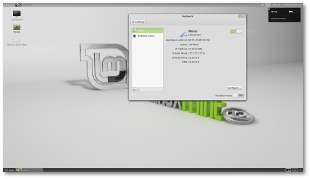
Xterm is compiled with the toolbar, or menubar, disabled. – Grab the thumb and use "click-and-drag" with the middle mouse button.

Other X resources that affect scrolling are jumpScroll, multiScroll, and fastScroll (all under XTerm.vt100, see xterm(1)). You can change the number of saved lines with the saveLines resource, To scroll up and down through the off-screen lines one can use the mouse wheel, the key combinations Shift+PageUp and Shift+PageDown, or the scrollbar.īy default, 1024 lines are saved. ScrollingĪs new lines are written to the bottom of the xterm window, older lines disappear from the top.

Tip: You can also have separate sets of keybindings that you switch between.
#Xterm versus uxterm full#
See the KEY BINDINGS section of xterm(1)for the full list of actions and many examples. If you want to insert a literal newline, it also needs to be escaped (hence \n\). Each binding must be separated by the escape sequence \n. #override indicates that these bindings should override any existing ones (you almost always want this for custom key bindings). For example, you can map Ctrl+M and Ctrl+R to maximize/restore the window: These actions can be mapped to mouse/key combinations using the translations resource. copy-selection(), hard-reset(), scroll-back(), etc. Xterm defines a whole suite of "actions" for manipulating the terminal e.g. The workaround is to send ^? when backspace is pressed by setting the resources This breaks the Ctrl+H key combination on Emacs. On Arch Linux, xterm sends ^H key when backspace is pressed. To make Alt instead send a ^[ (escape) key (as in gnome-terminal and konsole), set The default Alt key behavior in xterm is a modifier to send eight bit input characters e.g. Make 'Alt' key behave as on other terminal emulators This is often necessary because XTerm does not support all UTF-8 locales, including eo.UTF-8. If you do not use UTF-8, you may need to force xterm to more strictly follow your locale by setting You can check the result within xterm using either of these commands:Įnsure that your locale is set up for UTF-8. Two usable terminfo names are xterm and xterm-256color. The terminal itself should report the correct TERM to the system so that the proper terminfo file will be used. Do not set the TERM variable from your ~/.bashrc or ~/.bash_profile or similar file. See xterm(1)for a complete list.Īllow xterm to report the TERM variable correctly. There are several options you can set in your X resources files that may make this terminal emulator much nicer to use.

The LXTerminal (or GNOME-Terminal, Xfce4-Terminal or Konsole) is more user friendly and generally preferred. At least on Linux Mint 13 Xfce, XTerm and UXTerm aren't installed by default so you can safely remove them if you so desire (nice to have a backup terminal application though, should your installed one break for some reason).
#Xterm versus uxterm professional#
I'm not sure as to their value for average users, and I think they are useful more to professional users with specialist needs.

You pretty much want Unicode support these days. UXTerm is a wrapper around XTerm, giving it Unicode support. Why do you have three terminal applications installed (you actually have more, also getty which provides the virtual terminals you can access with Ctrl+Alt+F1 through F6) is a good question. Not sure if there historically is a difference I think both meant the physical device with which to operate a computer. AFAIK, colloquially we use the terms console and terminal interchangeable.


 0 kommentar(er)
0 kommentar(er)
